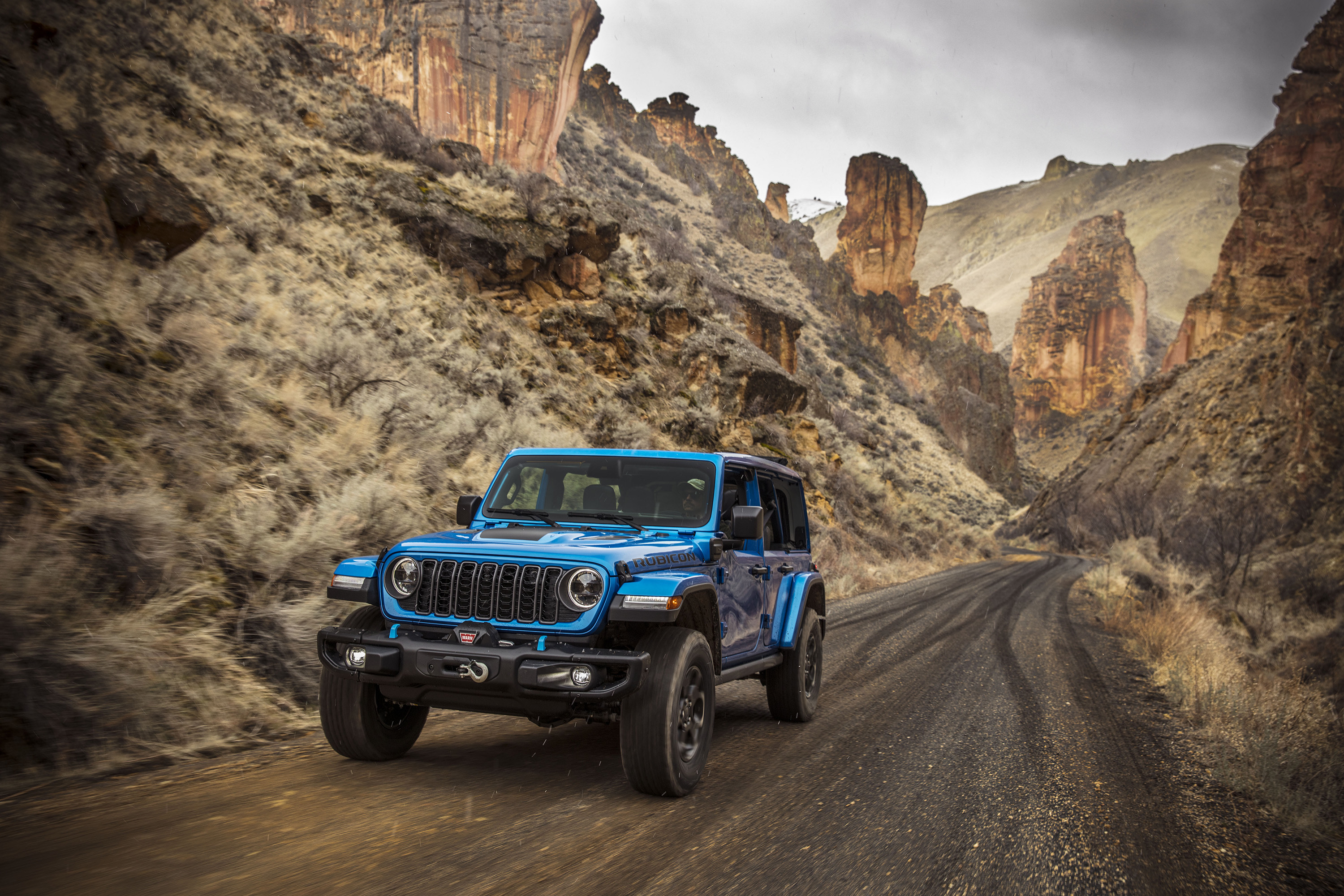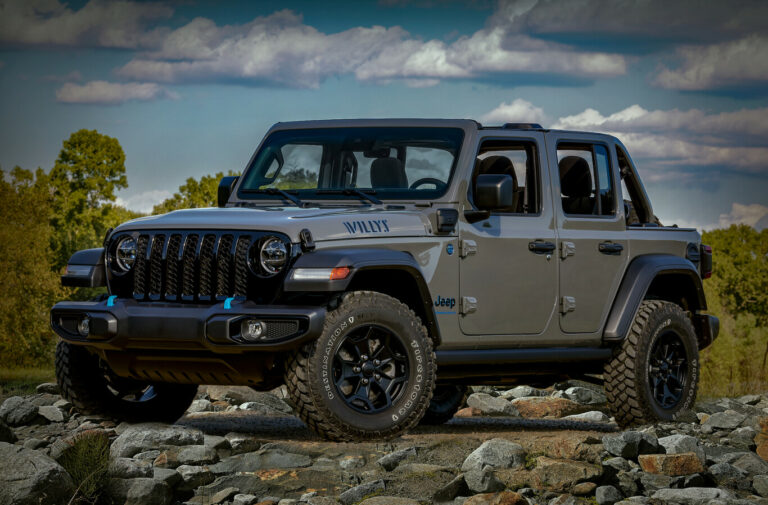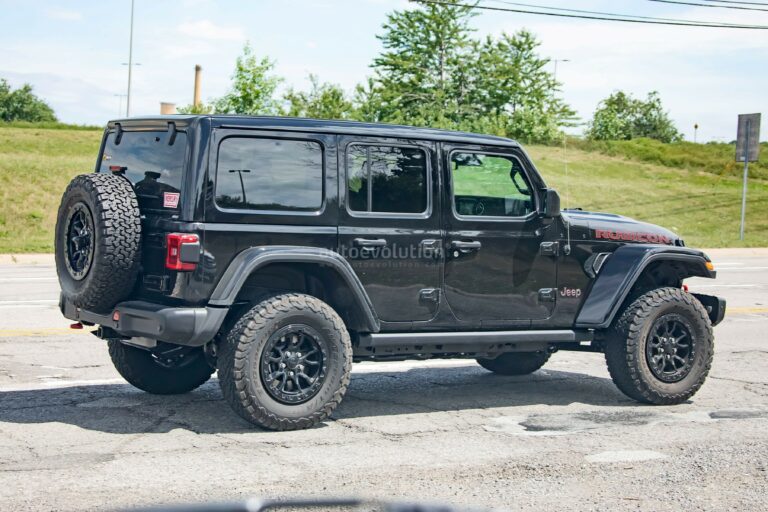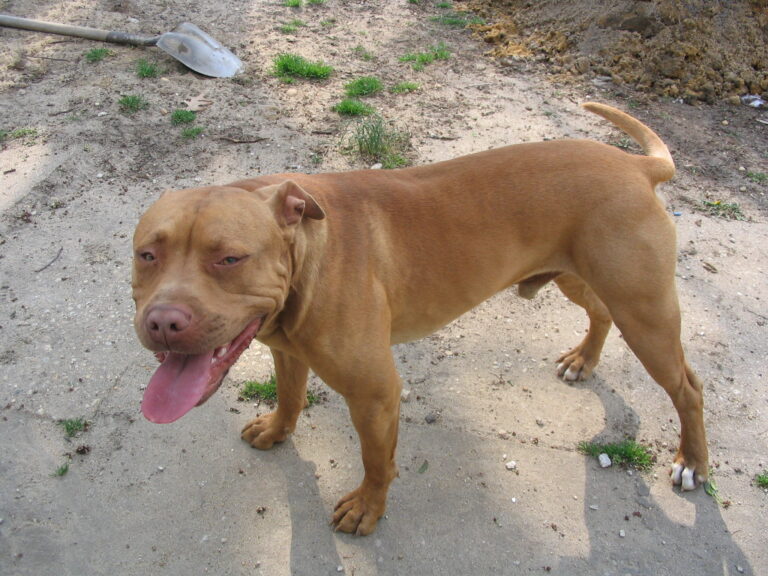Jeep Comanche Pickups For Sale: A Comprehensive Guide to Finding Your Classic MJ
Jeep Comanche Pickups For Sale: A Comprehensive Guide to Finding Your Classic MJ jeeps.truckstrend.com
The Jeep Comanche, internally known as the MJ, holds a unique and revered position in the annals of automotive history. Produced for a relatively short span from 1986 to 1992, this compact pickup truck carved out its niche by combining the rugged, off-road prowess of the iconic Jeep Cherokee (XJ) with the utility of a traditional truck bed. For enthusiasts and collectors, the allure of a Comanche for sale isn’t just about acquiring a vehicle; it’s about owning a piece of American automotive heritage, a versatile workhorse, and a distinctive classic that stands apart from the crowd.
In a world increasingly dominated by full-sized trucks, the compact, agile, and surprisingly capable Comanche offers a refreshing alternative. Its unibody construction, shared with the legendary XJ Cherokee, provides a remarkably comfortable ride for a pickup of its era, while its robust drivetrain options ensure it can tackle trails and hauls with equal aplomb. This guide will delve into everything you need to know about finding, evaluating, and ultimately purchasing a Jeep Comanche pickup, transforming your search from a mere transaction into a well-informed quest for your ideal MJ.
Jeep Comanche Pickups For Sale: A Comprehensive Guide to Finding Your Classic MJ
The Enduring Legacy of the Jeep Comanche (MJ)
The Jeep Comanche was born from a strategic decision by AMC (American Motors Corporation), then owner of Jeep, to capitalize on the booming compact truck market of the mid-1980s. Leveraging the highly successful and recently redesigned Cherokee XJ platform, AMC engineered a pickup variant that retained much of the XJ’s front end and unibody construction, but with a unique frame-like rear section to support the bed. This hybrid design gave the Comanche a distinct advantage: the ride quality and handling of an SUV, combined with the hauling capability of a truck.
Over its production run, the Comanche saw various engine options, including a frugal 2.5L four-cylinder, a short-lived 2.8L GM V6, and a rare Renault 2.1L diesel, but it was the introduction of the legendary 4.0L inline-six engine in 1987 that truly cemented its reputation. This powerhouse, especially its High Output (HO) version from 1991-1992, provided ample torque and reliability, making the Comanche a formidable off-roader and a capable hauler. Despite its popularity and critical acclaim, production ceased in 1992, largely due to internal competition with Chrysler’s own Dakota pickup after Chrysler acquired AMC. This limited production run has only added to the Comanche’s mystique and desirability among collectors today.
Why Buy a Jeep Comanche Today?
The reasons to seek out a Jeep Comanche for sale are as varied as the trucks themselves:
- Distinctive Classic Styling: The Comanche possesses an unmistakable 80s/early 90s charm that stands out in a sea of modern, often bulbous, trucks. Its clean lines and classic Jeep grille appeal to enthusiasts of vintage design.
- Rugged Durability: Built on the XJ platform, the Comanche inherits a reputation for toughness and reliability, particularly when equipped with the 4.0L engine. These trucks were designed to endure.
- Off-Road Capability: With available Command-Trac and Selec-Trac 4WD systems, solid axles (Dana 30 front, Dana 35 or Dana 44 rear), and impressive ground clearance, the Comanche is highly capable off the beaten path, often outperforming newer, more complex 4x4s.
- Practical Utility: Despite its compact size, the Comanche offers a usable truck bed (6-foot or 7-foot options), making it perfect for light hauling, outdoor adventures, or as a unique daily driver for those who don’t need a full-size pickup.
- Parts Commonality: A significant advantage for owners is the vast interchangeability of mechanical parts with the ubiquitous XJ Cherokee. This makes sourcing components for maintenance and repairs relatively easy and affordable.
- Collector’s Appeal: As a relatively rare and unique vehicle, well-maintained Comanches are steadily appreciating in value, making them not just a fun vehicle but potentially a sound investment.


Key Models, Engine Options, and Drivetrains
Understanding the variations of the Comanche is crucial for your search:
- Trim Levels: Comanches were offered in various trims, including the base model, Pioneer, Chief, Laredo, and the sporty Eliminator. The Eliminator, especially with the 4.0L HO engine and bucket seats, is often the most sought-after for its performance and aesthetics.
- Engine Choices:

- 2.5L AMC I4 (1986-1992): Reliable and fuel-efficient, but less powerful. Good for lighter duty or dedicated rock crawling where torque isn’t paramount.
- 2.8L GM V6 (1986): Early, less desirable option due to reliability issues and lower power output.
- 2.1L Renault Turbo Diesel (1986-1987): Rare and unique, offering excellent fuel economy but challenging to find parts for today.
- 4.0L AMC I6 (1987-1990 Renix; 1991-1992 High Output): The gold standard. Powerful, durable, and highly desirable. The Renix system (pre-1991) is slightly more complex, while the HO (High Output) is known for its robust power and simplicity.
- Transmission Options: Both manual (5-speed AX-4, AX-5, AX-15 depending on engine/year) and automatic (3-speed TF904, TF999, 4-speed AW4) transmissions were available. The AX-15 manual and AW4 automatic are highly regarded for durability.
- Drivetrain: Comanches came in 2WD and 4WD configurations. 4WD models utilized the robust Command-Trac (part-time 4WD) or the more versatile Selec-Trac (full-time capable 4WD) transfer cases, both excellent options.
What to Look For When Buying a Comanche
Finding the right Comanche requires a keen eye and thorough inspection. These trucks are often 30+ years old and have seen their share of work.
- Rust, Rust, Rust: This is the primary enemy of the Comanche.
- Rocker Panels: Prone to severe rust. Check thoroughly.
- Floorboards: Lift floor mats and inspect.
- Cab Corners: Another common rust trap.
- Bed: Check for perforations, especially near the wheel wells and where the bed meets the cab.
- Frame Rails: While largely unibody, the rear "frame rails" that support the bed can rust out, especially where the leaf springs attach.
- Subframe/Unibody Mounts: Inspect critical connection points.
- Engine Condition:
- 4.0L: Listen for excessive valvetrain noise, knocking, or unusual vibrations. Check for oil leaks (rear main seal is common but not always catastrophic). Verify cooling system health (radiator, hoses, water pump). Ask for service records.
- All Engines: Check oil, coolant, and transmission fluid for proper levels and appearance.
- Transmission & Drivetrain:
- Manual: Check clutch engagement, smooth shifting, and gear pop-out.
- Automatic: Ensure smooth shifts, no slipping or harsh engagement.
- Transfer Case: Test 2WD, 4-Hi, and 4-Lo engagement. Listen for grinding or clunking.
- U-Joints & Driveshafts: Inspect for play.
- Suspension & Steering:
- Check leaf springs for sagging or broken leaves.
- Inspect shocks, bushings, and tie rods for wear.
- Test steering for excessive play or wandering.
- Electrical & Interior:
- Verify all lights, gauges, windows, and HVAC components work.
- Check for water leaks (especially around the windshield and rear window).
- Assess seat condition, dash cracks, and overall interior wear.
- Modifications: Be wary of poorly executed lifts or engine swaps. Look for quality components and professional installation.
- Documentation: A clear title is essential. Service records, if available, are a huge plus.
Where to Find a Jeep Comanche For Sale
Finding a Comanche requires patience and a multi-pronged approach:
- Online Marketplaces: Craigslist, Facebook Marketplace, and eBay Motors are primary hunting grounds. Use broad search terms initially (e.g., "Jeep pickup," "Comanche," "MJ").
- Dedicated Forums & Groups: Websites like ComancheClub.com have classified sections, and Facebook groups dedicated to Jeep MJs are invaluable resources for finding trucks for sale by enthusiasts.
- Classic Car Dealerships & Auctions: Less common, but higher-end or restored examples might appear here.
- Word of Mouth: Let friends, family, and local mechanics know you’re looking.
Potential Challenges and Solutions
Owning a vintage vehicle like the Comanche comes with its own set of considerations:
- Scarcity: Comanches are not as abundant as XJ Cherokees. Solution: Be patient, expand your search radius, and be ready to act quickly when a good one appears.
- Condition Variability: Many Comanches for sale will be well-used, neglected, or require significant work. Solution: Set realistic expectations and budget for potential repairs or restoration. Don’t be afraid of a project, but understand the commitment.
- Parts Availability: While mechanical parts shared with the XJ are plentiful, unique Comanche body panels (tailgate, bed sides, rear bumper) and specific interior trim pieces can be challenging to find. Solution: Leverage online forums, specialty suppliers, junkyards, and consider aftermarket solutions or even custom fabrication for rare components.
- Price Fluctuations: Prices vary wildly based on condition, mileage, engine, and location. Solution: Research thoroughly, compare multiple listings, and get a pre-purchase inspection to ensure you’re paying a fair price for the vehicle’s actual condition.
Price Guide: Jeep Comanche Pickups For Sale (Estimated Ranges)
Please note that these are approximate price ranges and can fluctuate significantly based on geographic location, specific modifications, historical significance, and seller motivation. A pre-purchase inspection is highly recommended.
| Condition Category | Engine Type | Drivetrain | Estimated Price Range (USD) | Notes |
|---|---|---|---|---|
| Project/Parts Truck | Any | Any | $1,000 – $3,500 | Significant rust, non-running, major mechanical issues, incomplete. Best for experienced restorers or for parts donors. |
| Fair/Driver Quality | 2.5L I4 / 4.0L I6 | 2WD/4WD | $3,500 – $8,000 | Runs and drives, but needs work (e.g., rust repair, suspension, minor leaks, interior refresh, paint). Could be a daily driver with some immediate TLC. |
| Good/Solid Driver | 4.0L I6 (preferred) | 4WD | $8,000 – $15,000 | Minimal rust, mechanically sound, clean interior, decent paint. May have minor flaws but is reliable for regular use. Highly desirable for those wanting a usable classic. |
| Excellent/Restored | 4.0L I6 (HO preferred) | 4WD | $15,000 – $30,000+ | Show-quality paint, rust-free, fully restored/rebuilt mechanicals, pristine interior. Often a low-mileage original or a professional restoration. Eliminator models fetch top dollar. |
Practical Advice and Actionable Insights
- Define Your Purpose: Are you looking for a daily driver, a weekend trail rig, or a full-blown restoration project? Your answer will significantly narrow your search and budget.
- Set a Realistic Budget: Beyond the purchase price, factor in immediate repairs, maintenance, registration, and insurance. Older vehicles always require some initial investment.
- Join the Community: Connect with Jeep Comanche owners’ groups and forums online. They are invaluable sources of information, buying tips, technical advice, and even leads on trucks for sale.
- Get a Pre-Purchase Inspection (PPI): Even if you’re mechanically inclined, having a trusted mechanic (especially one familiar with older Jeeps) inspect the vehicle can uncover hidden issues and save you thousands in the long run.
- Be Patient, But Act Decisively: Good Comanches don’t last long on the market. Do your research, but when the right one appears, be prepared to move quickly.
Frequently Asked Questions (FAQ)
Q1: Is the Jeep Comanche a good daily driver?
A1: Yes, a well-maintained Comanche, especially with the 4.0L engine, can be a reliable and fun daily driver. Its compact size makes it easy to maneuver, and the ride quality is surprisingly good for a truck of its era. However, expect older vehicle quirks and be prepared for regular maintenance.
Q2: Are parts hard to find for the Comanche?
A2: Mechanical parts (engine, transmission, transfer case, axles, suspension) are generally easy to find due to extensive commonality with the highly popular XJ Cherokee. Unique Comanche-specific body panels (bed, tailgate, rear bumper) and some interior trim pieces can be challenging to source and may require searching junkyards, specialized suppliers, or online forums.
Q3: What’s the best engine for a Jeep Comanche?
A3: The 4.0L inline-six engine (especially the 1991-1992 High Output version) is overwhelmingly considered the best for its power, torque, and legendary reliability. It’s the most sought-after engine for both performance and long-term ownership.
Q4: What’s the main difference between a Jeep Comanche and a Jeep Cherokee (XJ)?
A4: The Comanche (MJ) shares its front unibody structure, engine, transmission, and most front suspension components with the Cherokee (XJ). The key difference is the rear: the Cherokee is an SUV with an integrated cargo area, while the Comanche features a separate truck bed mounted to a unibody-integrated frame section, giving it pickup utility.
Q5: Are Comanches expensive to maintain?
A5: Generally, no. Thanks to the shared mechanicals with the XJ Cherokee, most parts are readily available and relatively inexpensive. Labor costs will depend on whether you do the work yourself or pay a mechanic. The biggest potential expenses typically relate to extensive rust repair or major drivetrain overhauls if buying a neglected example.
Q6: What’s the rustiest part of a Jeep Comanche?
A6: Rocker panels, floorboards, cab corners, and the rear bed/frame rails (especially where the leaf springs attach) are the most common and critical areas for rust on a Comanche. Thorough inspection of these areas is paramount.
Conclusion
The Jeep Comanche pickup is more than just a vehicle; it’s a statement. It represents a unique blend of Jeep’s legendary off-road capability, classic utilitarian design, and surprising everyday practicality. While finding a well-preserved Comanche for sale requires diligence, the rewards of owning this distinctive and increasingly rare classic are immeasurable. Whether you envision it as a rugged workhorse, a capable trail rig, or a cherished piece of automotive history, the Comanche offers an ownership experience unlike any other. With the right knowledge and a patient approach, you can embark on a successful quest to find your perfect MJ and join the ranks of proud Jeep Comanche owners.




